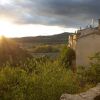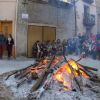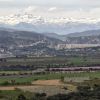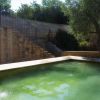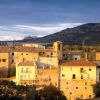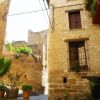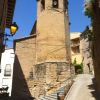The village of Artasona belongs to the municipal council of El Grado and stands on a fluvial terrace on the left bank of the River Cinca. The bulk of an old castle is the most noticeable feature of the compact and variegated urban centre.
Between the 15th and 16th centuries a particular typology of castle construction was common in the region. It brought together civil and defensive elements and gave rise to fortified palaces, which extended over the lands of the gentry. They were huge and important structures, which usually had a square layout with towers at each corner and large rooms typical of a palace. Some of these were adapted to store firearms or artillery.
Their principal objective was the defence and immediate control of the possessions of the marquisate. The 16th century presented a particularly tumultuous panorama as there were many confrontations between villagers and nobility over local resources such as land, water, mountains and pasture.
On the 20th January the traditional San Fabían Bonfire takes place. The villagers join together to burn “bad winds” and also hold an informal auction. They bid for objects donated by families that are usually quite deceptive in appearance!



